PART.2
Bulk Shipping
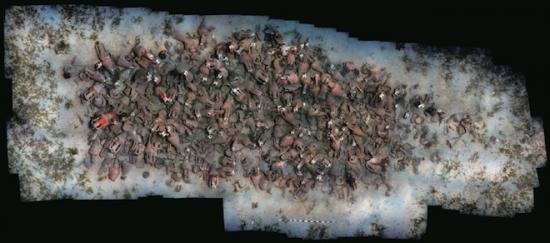
Rewind 2,400 years and shipping containers, those corrugated rectangular icons of modernity, took the form of amphora, a vase-shaped pottery used to transport goods across the Mediterranean.
In this shipwreck, found off the southern coast of Cyprus and dated to 4th century BC, amphorae are stacked in the outline of the ship that carried them. The design is characteristic of the Greek island of Chios, and the cargo was likely Chian wine, celebrated as the finest vintages of the Classical world.

Citation: "The 4th-Century-BC Mazotos Shipwreck, Cyprus: a preliminary report." By Stella Demesticha. International Journal of Nautical Archaeology, Vol. 40 No.1, March 2011.
Images: 1) Photomosaic of the wreck and its cargo. (Bruce Hartzler/University of Cyprus, Archaeological Research Unit/Stella Demesticha) 2) Three-dimensional reconstruction of the wreck. (Foteini Vlachaki and Markos Garras/University of Cyprus, Archaeological Research Unit/Stella Demesticha)
Blackbeard's Horn
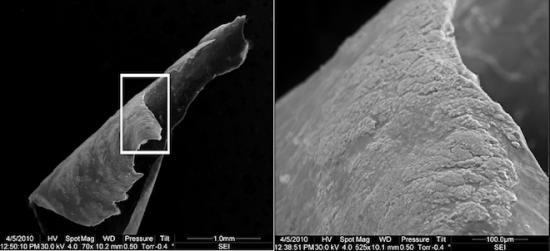
In 1996, archaeologists found the wreckage of an early 18th century battleship just off the coast of North Carolina. Only one ship that size was known lost in the area: the Queen Anne's Revenge, used by none other than Edward Teach, better known as the infamous pirate Blackbeard.
With a flag depicting a skeleton spearing a heart while toasting the devil, Blackbeard was renowned for his ferocity. The Queen Anne's Revenge sank -- or, some say, was intentionally abandoned -- just weeks after Blackbeard's crew terrorized the city of Charleston, kidnapping prominent citizens and ransoming them for medicine.
The wreck has returned a bounty of piratical devices, including cannons retrofitted to fire bags of nails. Less diabolical is what appears to be a leather-bound horn, perhaps blown by Blackbeard himself.
Citation: "Identification of Suspected Horn from the Queen Anne's Revenge (1718), North Carolina, USA." By Wendy Welsh, Brianna Biscardi, Thomas Fink, Sarah Watkins-Kenney and Anthony Kennedy. International Journal of Nautical Archaeology, Volume 41, Issue 1, March 2012.
Image: Scanning electron microscope image of the horn. (Welsh et al./International Journal of Nautical Archaeology.)
Thunder Bay's Wrecks
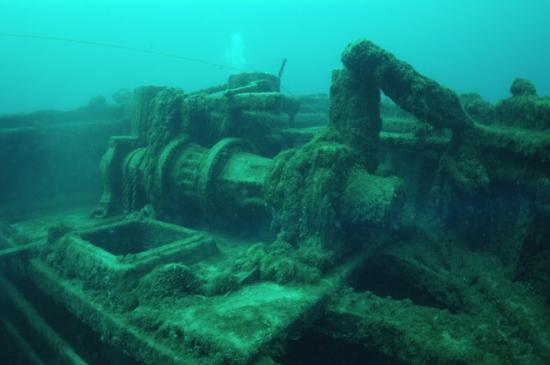
The floors of the Great Lakes are a cross-section of marine history, their ice-cold waters preserving the sunken remains of Native American craft, European trading vessels and the cargo freighters of pre-industrial America.
Many of the wrecks were discovered and mapped during research by the National Oceanic and Atmospheric Administration. One such wreck is the EB Allen, a wooden schooner that sank in 1871 in northwestern Lake Huron, a treacherous area known as Shipwreck Alley. The EB Allen and six other historically significant ships can now be toured online in 3-D.
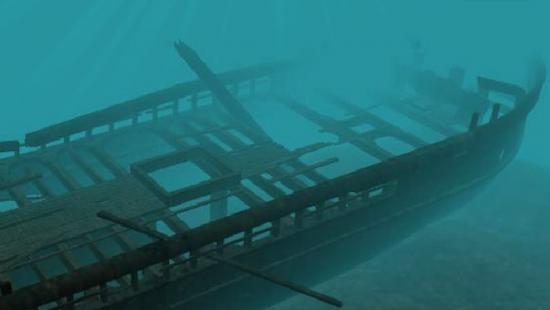
Images: 1) The EB Allen's windlass, a machine used to lift heavy weights. (NOAA) 2) 3D view of the EB Allen's bow. (NOAA)
The Monitor's New Mission
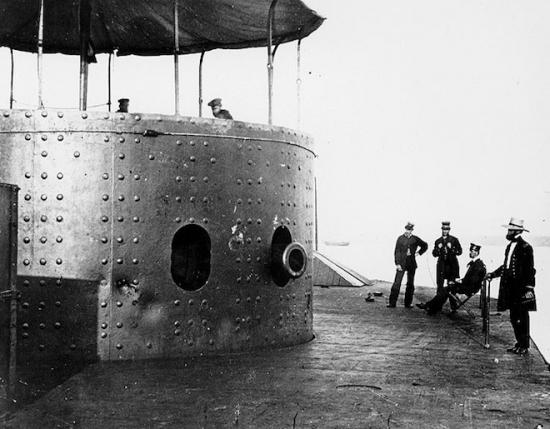
Known as the ship that launched a modern Navy, the USS Monitor's iron armoring and 360 degree-swiveling gun turret were revolutionary in 1862, when it was launched by Union forces in the US Civil War. The ship sank later that year off the coast of North Carolina, and it was only found a century later. In 1975 the Monitor was federally designated as a marine sanctuary and now teems with aquatic life.
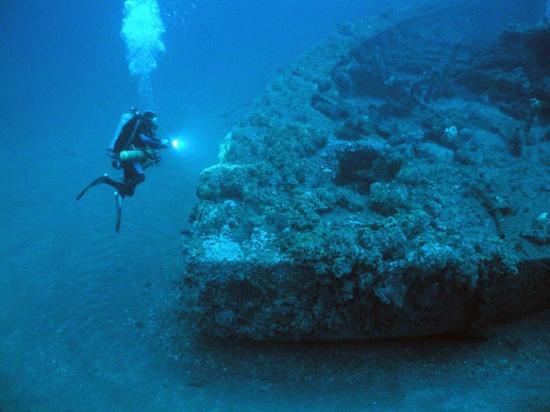
Images: 1) Officers and gun turret aboard the Monitor. (US Navy) 2) The Monitor's wreckage. (NOAA)